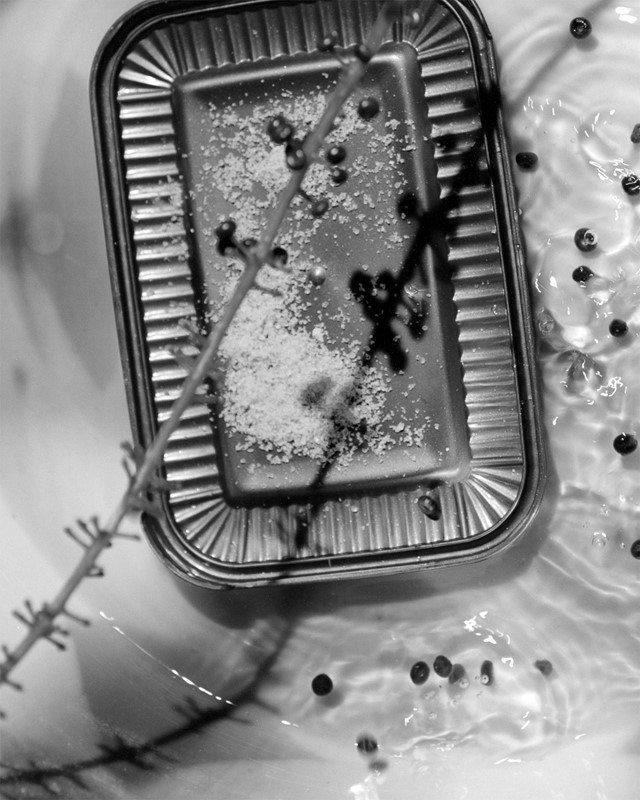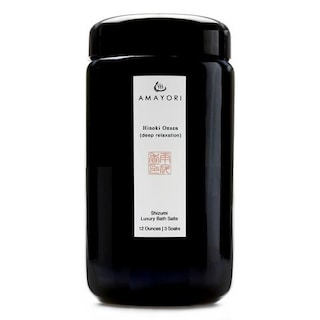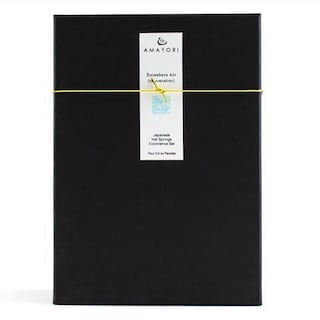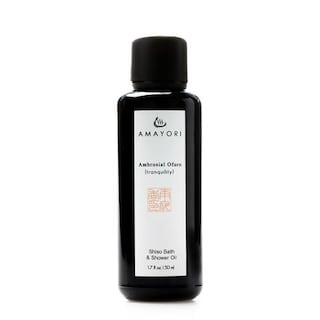With unique and small-batch harvested ingredients, Amayori’s mineral salts will transform bath time into a moment of meditative bliss
From the niche new beauty brands doing something different, to the industry’s evergreen icons, Sophie Bew opens up AnOther’s dream vanity in this series...
- Who should use it? Anyone who loves a bath
- How long until I love it? Pick your concoction – be it the relaxing Shizumi salts or the mineral-rich Hot Springs Experience set – and you’ll be hooked
- How planet-/people-friendly is it? You can refill the beautiful black glass jars with the handmade salt mixes, while ingredients are sourced on a small-batch basis
- How do I use it? Pour a good handful of the salt into your bath while the water runs and swirl
Bathing is an art in Japan. Entire towns across the country, sat on mineral-rich natural springs, are dedicated to the activity. Clothing is too. Ryokans – traditional Japanese inns – in said towns will have a standard issue Yukata (a printed cotton robe) for guests, to be worn with little wooden Geta sandals. Visitors can be seen clip-clopping from one public bath (Onsen) to the next in matching (often navy and white patterned) outfits, each headed to their own version of meditative bathing bliss.
Natural spring water has been celebrated for centuries (though not medically proven) for its health benefits: iron-rich springs are meant to soothe painful joints; sulphur helps to manage blood pressure and prevent the hardening of the arteries; hydrogen carbonate smooths the skin; a combo of sodium, chloride and calcium is thought to help reduce fatigue, digestive issues, nerve and muscular pain, and bruising. Practicalities aside though, the process is far more meditative than your basic bath – largely because you must wash yourself before entering. (Once in, you are entirely nude, and more often than not, in a gender-divided space – rules on laminated posters insist you must not cover yourself with your washcloth, nor let your dirty washcloth touch the water. Such stringent guidelines make for a near-holy experience.) This means that once you’re stewing in the sulphurous hot waters – many pools are outside, amid beautiful landscapes or beneath trees, called Rotenburo – and sometimes simultaneously giving the opportunity for full-body tanning, there’s little more to do than bob around. There are no phones, no screens – you’re not even distracted by having to clean your body, you may simply soak up the goodness of the waters.
Despite thoroughly endorsing candles, oils and salts in my bathroom, there’s little I can do to recreate this inimitable Japanese Onsen experience at home – especially the tanning, sigh – but Amayori’s bath salts bring me somewhere close. Their high mineral content comes thanks to expertly harvested salts: namely a purifying sodium-chloride rich kind, found off the coast of the Ishigaki Island of Okinawa and Hon Nigari, high in magnesium chloride, which is deeply relaxing for the muscles. These, combined with organic Japanese essential oils – whether that’s from fragrant hinoki wood (commonly found in incense) or yuzu, an ultra-bright eastern citrus fruit – Japanese herbs and botanicals, teas and vitamin-oozing seaweeds make for an unbeatable soak. The key, I think, is the scent – they are distinctly escapist, smelling unlike any other kind of bath I’ve had than in those special cypress-wood tubs. I’m yet to try the shower-first technique in my own home as it seems a little extreme (also, since my bath and shower reside in the same spot I’d have to wait for the tub to fill, slightly damp). But come to think about it, without using bathing as a means to simply cleanse my body, perhaps I’ll get closer to using it to cleanse my mind.



